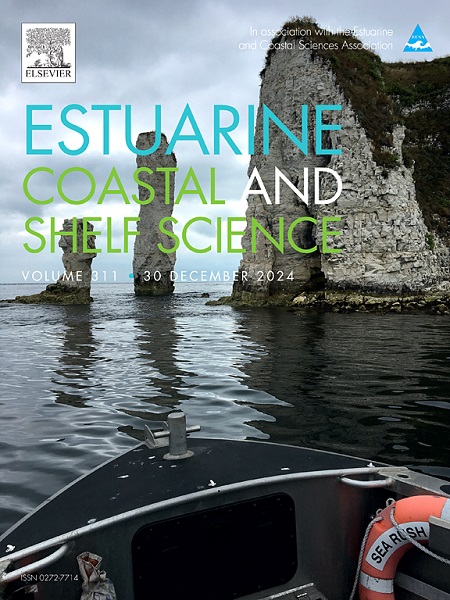Multiscale analysis of zooarchaeological data to reconstruct past kelp forest productivity for the Northern Channel Islands, California U.S.A.
IF 2.6
3区 地球科学
Q1 MARINE & FRESHWATER BIOLOGY
引用次数: 0
Abstract
As primary consumers, sea urchin populations provide key insights into the health of kelp-forest ecosystems along the Pacific Coast of North America. When their populations are uncontrolled by predation, intensive sea urchin grazing can deplete kelp forest habitats, affecting the productivity of marine organisms that rely on kelp for food and shelter. Using a multiscale approach, we analyze zooarchaeological assemblages at regional, island-wide, and localized scales from trans-Holocene records on two of California's Northern Channel Islands: Santa Rosa and San Miguel. We develop and present palaeoecological indices that indicate the relative proportion of sea urchins in archaeological assemblages increased after ∼4200 cal BP, contemporaneously with a decrease in red abalone and other kelp-dependent mollusks. The result of this study suggests that climatic variability with increased sea surface temperature anomalies (Δ 1 °C) caused a tipping point in nearshore marine ecosystems resulting in greater urchin proliferation events, subsequently decreasing the overall productivity of shellfish species associated with kelp forest ecosystems but occurring at different regional and temporal scales on and between islands. We suggest that Indigenous Islanders adapted to these changes by shifting foraging strategies and using unique harvesting-enhancement strategies involving stewardship of nearshore habitats by more intensively harvesting sea urchins from the intertidal during proliferation events. The results of this study apply to modern restoration efforts in kelp forest ecosystems around the Northern Channel Islands by providing long-term historical baselines for identifying areas that have been more resilient or vulnerable to climatic changes over thousands of years.
求助全文
约1分钟内获得全文
求助全文
来源期刊
CiteScore
5.60
自引率
7.10%
发文量
374
审稿时长
9 months
期刊介绍:
Estuarine, Coastal and Shelf Science is an international multidisciplinary journal devoted to the analysis of saline water phenomena ranging from the outer edge of the continental shelf to the upper limits of the tidal zone. The journal provides a unique forum, unifying the multidisciplinary approaches to the study of the oceanography of estuaries, coastal zones, and continental shelf seas. It features original research papers, review papers and short communications treating such disciplines as zoology, botany, geology, sedimentology, physical oceanography.

 求助内容:
求助内容: 应助结果提醒方式:
应助结果提醒方式:


